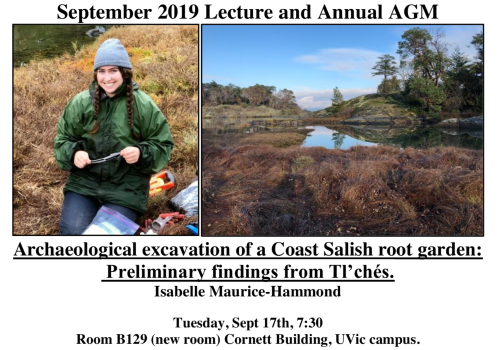
UVic field school students at work on Prevost Island inland midden site. Trust me, there really are dense midden deposits at this site.
I had a good visit the other day to the UVic archaeological field school, which is on Prevost Island in the Salish Sea. Prevost is a large island of about 1700 acres, mostly privately owned by an active farming family, but part of lies within Gulf Islands National Park Reserve. In some ways, it is the hub of the southern Gulf Islands, lying squarely between Salt Spring, Galiano, Pender and Mayne Islands. There’s no ferry to this island, so it’s surprisingly off the beaten track considering how centrally located it is. I suspect that’s a car-centric view, and taking the perspective of a maritime cultural landscape, this is one of the best-connected islands in the Salish Sea.
Anyway, the UVic fieldschool is being taught by doctoral student Eric McLay, whose research focuses on inland shell middens in the Salish Sea. These are middens well away from the high tide line — in the case of Prevost, about 800 metres inland. Several dozen comparable sites are known, such as the ones near the rockshelter burials on Gabriola Island. Why people brought substantial quantities of shell to these inland locations is something of a mystery, one which Eric, with the help of the fieldschool students and First Nations participants, and the support of the Wenner-Gren Foundation, aims to shed light on.
Continue reading →









